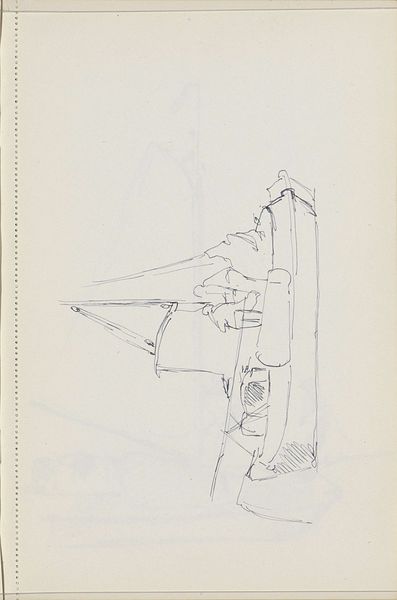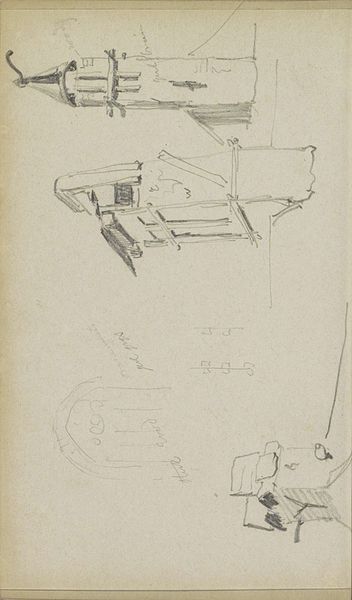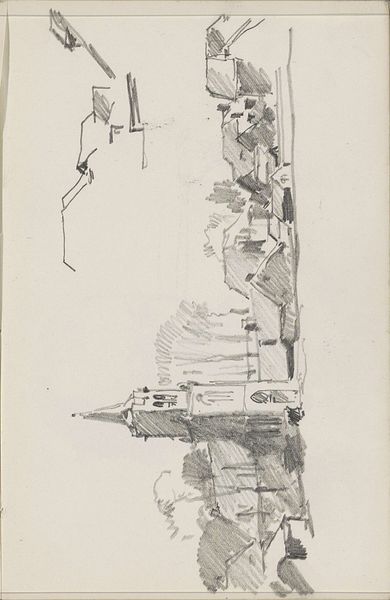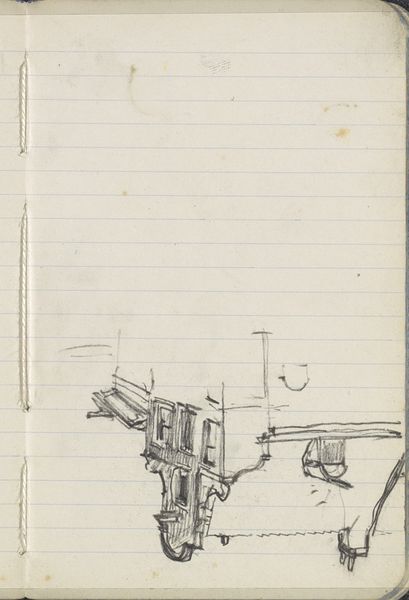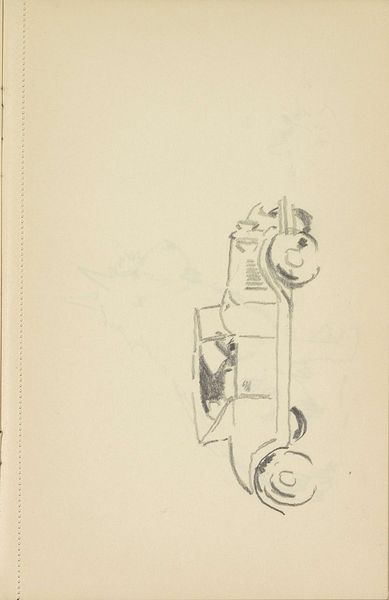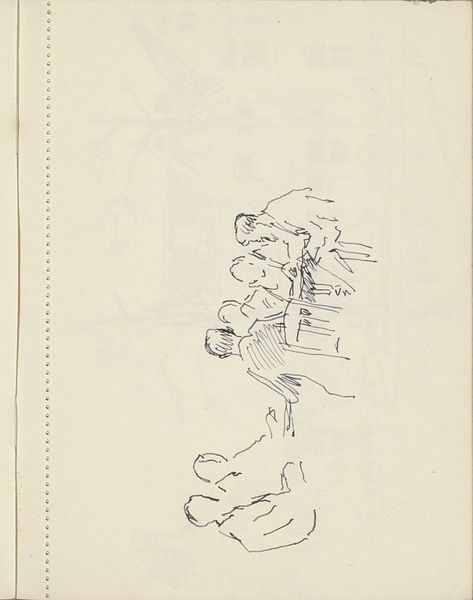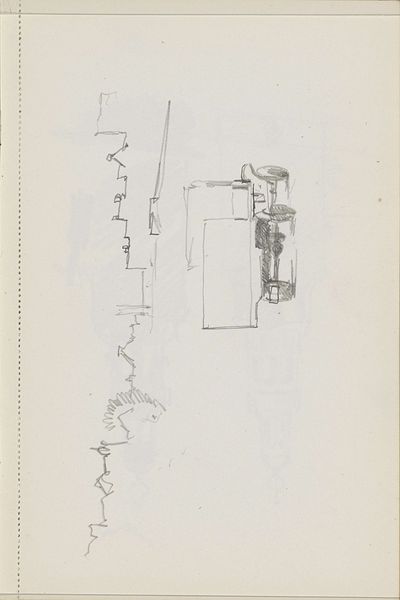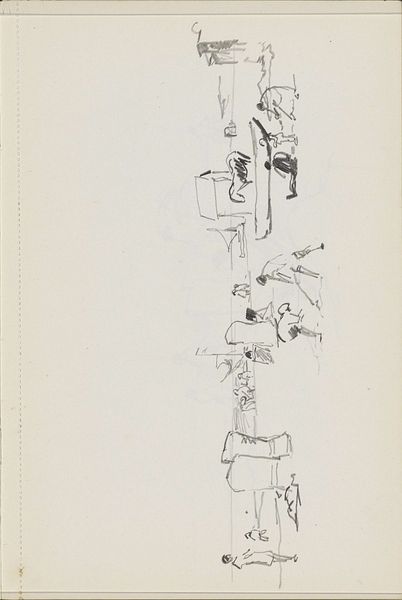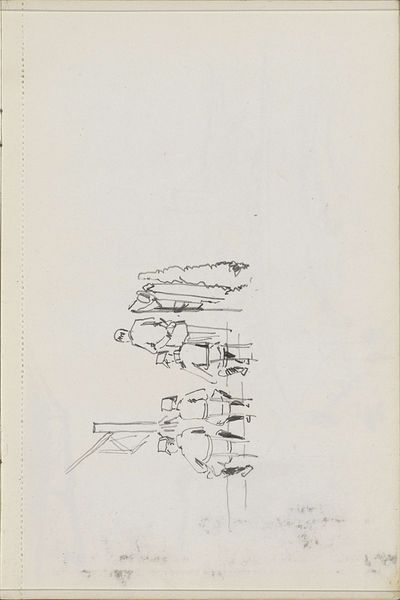
#
light pencil work
#
quirky sketch
#
personal sketchbook
#
idea generation sketch
#
sketchwork
#
ink drawing experimentation
#
pen-ink sketch
#
sketchbook drawing
#
storyboard and sketchbook work
#
sketchbook art
Copyright: Rijks Museum: Open Domain
Curator: This sketch by Cornelis Vreedenburgh, titled "Zittende man aan een gedekte tafel," which translates to "Sitting Man at a Set Table," intrigues me. It's from somewhere between 1890 and 1946 and resides here at the Rijksmuseum. Editor: Immediately, there's a lightness to it, isn’t there? The sketchy lines create a fleeting sense of the scene—a quick impression rather than a detailed portrait. Curator: Precisely. What I find interesting is considering this image as more than just a visual study. What can this man's solitude reveal about gender roles, or perhaps the political climate affecting Dutch society in the late 19th or early 20th century? Editor: A social commentary embedded in the minimalist rendering of form? That's quite a reading. For me, the intrigue lies within the balance of space. The upper part of the drawing is heavy with marks while the rest almost fades into nothing. It's an incomplete story. Curator: An incompleteness that perhaps invites us to complete the narrative. Look at the bareness of the table beyond what he is using, the solitary figure – these elements contribute to a potential critique of the isolation inherent in modern life. Think about the philosophical concepts of existentialism which were also coming into play during that era. Editor: An era undergoing massive shifts certainly reflects into the work.. But there is more to this than historical context, consider the execution and materiality, as well: The rough quality, combined with the absence of color emphasizes that he probably did it to document his reality. The simple strokes allow us to explore light, volume and the very basics of perspective. It's the architecture of observation laid bare. Curator: Yes, and by analyzing the bare architecture of his experience, we are offered an intimate moment within his history, a snapshot which encourages viewers to reflect on parallels with modern-day concerns of social inequality, identity, and individual experiences against their own societal framework. Editor: True; while you contextualize it within history and social strata, the skeletal essence of the drawing reveals itself to each viewer on a more structural level. Curator: And perhaps, by recognizing our subjectivity while simultaneously situating it within larger critical discourses, that the drawing sparks conversation about what it truly means to experience life. Editor: Well said; It provides viewers with plenty of room to ponder beyond initial impressions and analyze.
Comments
No comments
Be the first to comment and join the conversation on the ultimate creative platform.
